Contacting a pool builder near you for an on-site evaluation is the best way to find out what size, shape, or style of inground pools will work with your yard. Many of Thursday Pools’ independent dealers will provide a complimentary evaluation and estimate for creating a beautiful pool in your available space.
When the pool builder arrives, it will be helpful if you have a copy of your surveyor report or plot plan available. This plan details your lot specifications and property lines, along with your house and any other structures, and helps ensure you get the most accurate estimate. Here are some common factors that can affect the size of the swimming pool your yard can accommodate:
- Property Line Setbacks: Many states, counties, and cities have regulations outlining how close your swimming pool can be to your property line, especially if your yard wraps around to the front of your house.
- Septic System or Underground Utilities: Before choosing the size and depth of your pool, your local utility company will have to come out and mark the locations of all septic systems and underground utilities in the yard. You may discover your yard is large enough for the pool you’re considering, but the depth of the pool won’t work with underground utility placements. If that’s the case, you might consider a uniform-depth pool.
- Public Agency Easements: It’s possible to have easements on your property from government agencies or public utilities that you’re not aware of. If easements are not properly part of your title documents, you may not learn of them until applying for a pool permit. Potential public easements include storm drains, sewer mains, and natural gas lines.
- Neighboring Property Easements: If a neighboring property has an easement on part of your backyard, consult with your county assessor to determine if your pool size and placement are subject to easement issues.
- Overhead Power Lines and Utility Poles: Because fiberglass pools arrive prefabricated in one piece, installers must be able to clear existing power lines and utility poles while placing the shell in your yard.
- Zoning Regulations and Lot Coverage Rules: Many cities, counties, and states have zoning ordinances that require a certain percentage of your yard to be green space. You’ll need to check with your local zoning office for the rules in your area. If you have one, your homeowner’s association may also have codes regarding lot coverage.
- Retaining Walls, Trees, and Other Natural or Man-Made Structures: The position of trees and existing fencing, as well as the layout of your home, garage, outbuildings, and any retaining walls on your land, may also factor into the size of the pool you can get into your yard.
Depending on where you live, you may be able to apply for variances to keep your pool project on track, and your installers may not even encounter many hidden surprises or challenges. We simply want to alert you of potential issues upfront so you can prepare and avoid surprise costs down the line. Again, your local pool builder is the expert here. They will have experience dealing with just about every potential obstacle in your area, and will be able to help find solutions.
Check Out Thursday Pools’ Designs for Small Backyards

Sea Turtle
The Sea Turtle has many of the same great features of our larger fiberglass pools, including wide-open entry steps and elongated benches for sitting and visiting. The uniform, flat-bottom depth is great for water games and aerobics, and the Sea Turtle is swim-jet-ready, so you can easily add a swim jet system for the exercise benefits of lap swimming!

The Nest
The Nest is a chic plunge pool that brings big style to smaller spaces. Its modern, streamlined design features full-width entry steps that double as a natural gathering space, while the flat-bottom 4’8” depth is great for light exercise or effortless relaxation. The Nest makes minimalist luxury feel like a major win in any yard.

The Nook
The Nook offers a cozy twist on the modern plunge pool, combining built-in entry steps and a bench seating area to create a social-ready conversation zone. With the same 16-foot by 8-foot, 4-inch size and flat depth as the Nest, it’s an ideal fit for courtyards, compact lots, or anyone who loves refined design and meaningful moments in a more intimate space.

Pearl
Pearl is a sweet little gem of a freeform pool that’s perfect for soaking up some sun and cooling off. The 12-inch-deep tanning ledge accommodates two lounge chairs, and the wraparound bench seating gives you plenty of places to relax and socialize while children and young swimmers have room to play and splash around.

Wading Pool
If space is truly limited, you might be able to tuck a small Wading Pool in your backyard and still enjoy all the benefits of the fiberglass pool lifestyle. Wading pools are great for little ones learning to enjoy the water safely, and they’ll still provide a great backdrop for parties and entertaining.
Is it time to take the plunge? Which compact pool will YOU choose? Do your research and get the information you need to make an informed decision before you buy, and you’ll enjoy a lifetime of low-maintenance, fiberglass pool enjoyment.





 Obviously, summer is the time when we think about pools the most (especially when we don’t have one). But if you shop in the summer, you’ll likely have to wait until the following summer to enjoy your new pool. Starting in the spring will at least give you a headstart on pool installation season, but it still might be too late to get on your builder’s calendar for that year. So, fall and winter are great times to think about getting a new fiberglass inground pool. However, no matter when you start shopping, the only thing that really matters is
Obviously, summer is the time when we think about pools the most (especially when we don’t have one). But if you shop in the summer, you’ll likely have to wait until the following summer to enjoy your new pool. Starting in the spring will at least give you a headstart on pool installation season, but it still might be too late to get on your builder’s calendar for that year. So, fall and winter are great times to think about getting a new fiberglass inground pool. However, no matter when you start shopping, the only thing that really matters is 




 Tanning Ledge Chaise
Tanning Ledge Chaise



 Tanning Ledge Umbrellas:
Tanning Ledge Umbrellas:
















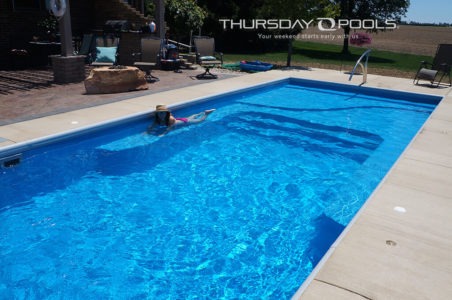

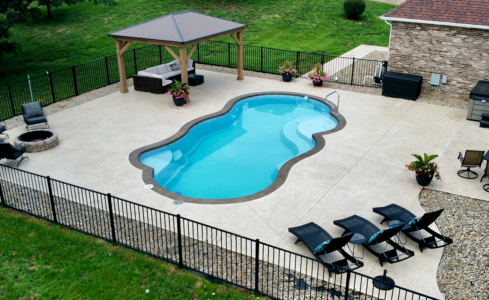



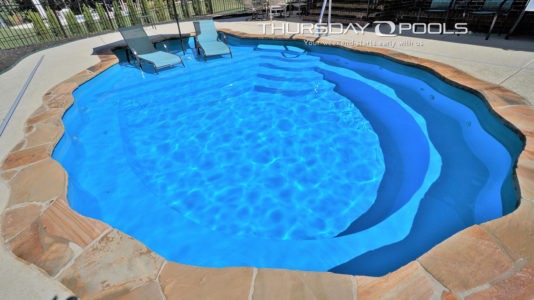


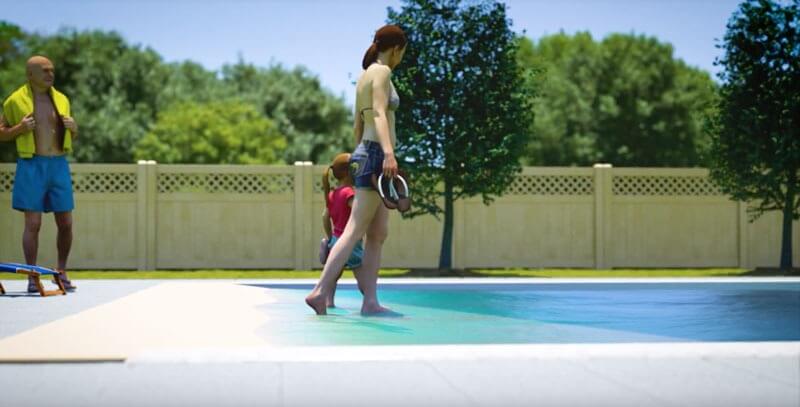



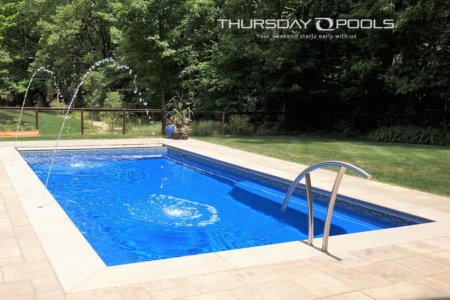 Groundwater is virtually everywhere. It lies below the earth’s surface in the cracks and spaces of soil, rock, clay, and sand. In some areas, it may be closer to the surface than in others. The upper level of which the ground saturates with water is known as the water table. Often homeowners know they have a ground water issue when they have a high-water table. Their yard may remain soft and wet for many days after rain. Your water table does vary over time and is generally at its highest later winter/ early spring. Even if you do not have a high-water table, you still need to be aware that ground water exists and can have damaging effects on your
Groundwater is virtually everywhere. It lies below the earth’s surface in the cracks and spaces of soil, rock, clay, and sand. In some areas, it may be closer to the surface than in others. The upper level of which the ground saturates with water is known as the water table. Often homeowners know they have a ground water issue when they have a high-water table. Their yard may remain soft and wet for many days after rain. Your water table does vary over time and is generally at its highest later winter/ early spring. Even if you do not have a high-water table, you still need to be aware that ground water exists and can have damaging effects on your 
 Automatic Pool Covers. Automatic pool covers do more than protect your loved ones and pets; they make owning your own pool easy. Automatic safety covers protect your inground pool from water evaporation loss which aids in keeping heat and chemicals in; helping you keep pool chemicals and heating costs down. They also aid in keeping debris out allowing you more time for fun and frolicking rather than
Automatic Pool Covers. Automatic pool covers do more than protect your loved ones and pets; they make owning your own pool easy. Automatic safety covers protect your inground pool from water evaporation loss which aids in keeping heat and chemicals in; helping you keep pool chemicals and heating costs down. They also aid in keeping debris out allowing you more time for fun and frolicking rather than  Water Features. The sound of moving water is mesmerizing and provides health benefits such as stress relief and relaxation. The best part about adding a water feature as one of your pool options is it allows you to enjoy the pool without even being in it. Adding a water feature to your inground pool can be as simple as a deck jet or as elaborate as a custom waterfall. Water features that circulate the pool water are not easily added on later and should be planned for during the construction phase of your project.
Water Features. The sound of moving water is mesmerizing and provides health benefits such as stress relief and relaxation. The best part about adding a water feature as one of your pool options is it allows you to enjoy the pool without even being in it. Adding a water feature to your inground pool can be as simple as a deck jet or as elaborate as a custom waterfall. Water features that circulate the pool water are not easily added on later and should be planned for during the construction phase of your project. Slides and Sports. Slides and water sports can bring out the competitive spirit in any family and raise the fun level. The options for inground pool slides have grown tremendously over the last decade. Extreme slides such as SR Smith’s
Slides and Sports. Slides and water sports can bring out the competitive spirit in any family and raise the fun level. The options for inground pool slides have grown tremendously over the last decade. Extreme slides such as SR Smith’s 
